Tags
Cherrapunjee, Garo, India, Jaintia, Khasi, Living Root Bridge, Mawlynnong Village, Meghalaya, North East India, Shillong, Sohra, Travel
Hi everybody 🙂
Welcome to the final post in my “Travelling through the North East of India” series which covers my travel experience through the North East in Nov-Dec 2010.
Today’s post is on the lovely, lush green state of Meghalaya. Those of you who have missed the earlier parts of this series, here are the links:
Travelling through the North East of India: Manipur
Travelling through the North East of India: Arunachal Pradesh
The Hornbill Festival of Nagaland, India
Travelling through the North East of India: Nagaland
Travelling through the North East of India: Assam
A bit about Meghalaya…
Meghalaya (meaning “the abode of clouds”) is a small hilly state, most of which is under dense forest cover. It is bounded to the north by Assam and by Bangladesh to the south. The state capital is Shillong, a popular hill station.
Undulating rivers, beautiful waterfalls, sparkling mountain streams, emerald-green lakes, precipitous gorges and panoramic views from hilltops are the main highlights of Meghalaya. Its subtropical forests support a vast variety of flora and fauna.
The state abounds in Archean rock formations. These rock formations contain rich deposits of valuable minerals like coal, limestone, uranium and sillimanite.
Meghalaya is also home to “Living Root Bridges” which are not be found anywhere else in the world.
Its people…
Tribal people make up the majority of Meghalaya’s population, each having its own distinctive customs and cultural traditions. The main tribes are the Khasis (of Mon-Khmer ancestry), the Garos (of Tibeto-Burman origin) and the Jaintias said to be from South East Asia.
One of the unique features of these tribes is that they follow a matrilineal system where lineage and inheritance are traced through women. Children take the mother’s clan title. Among the Khasis and Jaintias, the youngest daughter inherits the ancestral property and is the caretaker of aged parents and unmarried siblings. The tribal people of Meghalaya are the world’s largest continuous matrilineal culture. However, the male line, particularly the mother’s brother, may indirectly control the ancestral property since he may be involved in important decisions relating to property including its sale and disposal. In the Garo tribe, the youngest daughter inherits the family property by default, unless another daughter is so named by the parents. If there are no daughters, a chosen daughter-in-law or an adopted child inherits the property. The tribal people of Meghalaya are a part of what may be the world’s largest surviving matrilineal culture.
About 70% of the state population is Christian as many members of the Khasi, Jaintia and Garo communities have converted to Christianity. The principal languages are Khasi and Garo with English as the official language, enabling the ethnic and demographic groups to communicate with each other.
Tourist destinations that I visited…
Shillong
The state capital, Shillong, is set amidst a picturesque landscape of pine-covered hills, rapid streams and captivating waterfalls.
The highest point in Meghalaya is the Shillong Peak, also known as the “abode of the gods”. Around 10KM from Shillong, this legendary highest peak with an altitude of 1,961m offers a panoramic view of the city.
The Indian Air Force (IAF) Museum…
Shillong’s 18 Hole Golf Course, is not only one of the oldest in the country but is also rated as one of the best in Asia. A golfers’ paradise, it is the most picturesque spots in the city.
Cherrapunjee (Sohra)
About 53 KM away from Shillong lies the beautiful destination of Cherrapunjee (Sohra), once “the wettest place on earth”. It has not received the best of rainfall in recent times.
Situated at an altitude of 1,300m above sea level, overlooking the plains of Bangladesh, this amazing tourist destination offers a panoramic view of the hilly terrain, deep gorges and valleys and roaring waterfalls.
Standing at the edge of a waterfall…
The 335 metre Noh-Kalikai Falls is the tallest plunge waterfall in India…
Watch this short video of the waterfall:
Meghalaya has an estimated 500 natural limestone and sandstone caves spread over the entire state including most of the longest and deepest caves in the sub-continent. Not many of these have however been developed or promoted adequately for major tourist destinations.
An ancient rock…
The plains of Bangladesh are visible on the horizon…
Meghalaya has some of the thickest surviving forests in the country and therefore constitutes one of the most important ecotourism circuits in India.
Mawlynnong Village
About 90 KM away from Shillong lies Mawlynnong Village, known for its cleanliness. The travel magazine Discover India declared the village as the cleanest in Asia in 2003, and the cleanest in India in 2005.
This picturesque village located near the India-Bangladesh border is now drawing an endless stream of guests from across the country and abroad. Keeping the surrounding environment clean is an age old tradition of the 82 households living here.
Dustbins made out of bamboo are placed all over the village. Bamboo baskets are placed all across the village. Not a scrap of paper or any sign of litter can be seen around.
The waste from all the bamboo baskets or dustbins is collected and kept in a pit and then used as manure. Plastic is banned. Trees are planted to ensure that the virgin forest is kept intact and also replenished.
Sweet lime trees adorn the village…
This 85 feet high watch tower made entirely of bamboo offers a lovely view of the Bangladesh plains…
No ropes, only bamboo…
View from the top…
A species of Indian Rubber tree – Ficus elastica – thrives and flourishes alongside the many flowing rivers and mountains streams of the lower reaches of the Khasi and Jaintia hills, in and around Cherrapunjee and Mawlynnong. This tree shoots out a series of secondary roots from its trunk reaching down to the riverbed. The early war-Khasis used the tree’s unique nature to serve their need for bridges to cross rivers and streams. These are the “Living Root Bridges” of Meghalaya.
The “Living Root Bridge” carbon dated to 1100 years back…
Yours truly lazing on the root bridge…
How are these bridges made? Bamboo or hollowed out trunks of the betel nut tree are placed across the stream. The long tender roots of the rubber tree are then passed through these trunks for them to grow in the desired direction across the trunk. When they reach the other side, they are allowed to take root on the soil. Stones are used to fill any gaps in the floor of the bridge. Over a period of time, as the roots keep growing, the bridge becomes sturdy and ready for use. Some bridges are over a hundred feet long and take about ten to fifteen years to become fully functional. They get stronger with the passage of time and can support the weight of fifty or more people at a time. Some of the ancient root bridges used by the villagers are well over five hundred years old.
I hope you had a great time visiting me. It was a real pleasure sharing my journey through the North East of India with you. Next week, I’ll be back with some more exciting posts. So keep visiting!
See you soon…till then, take care 🙂
If you’re interested in knowing all about Mexico, do check my three e-books which are available for sale on this blog:
Mexico: The Country, Its History & The Maya World
If you’re a fan of Mills & Boon novels or love reading romance novels, here’s one for you available for sale on this blog:
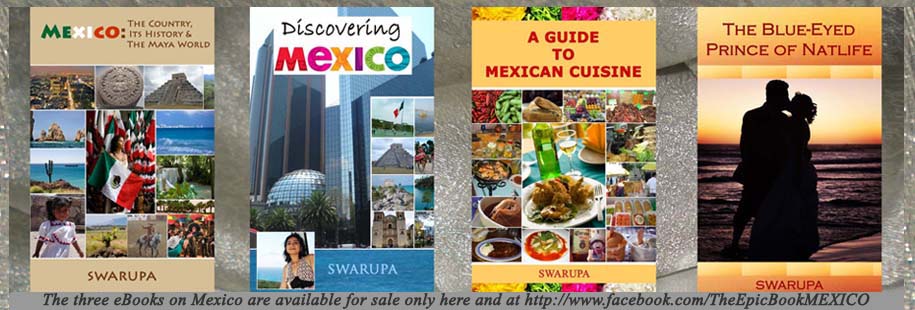










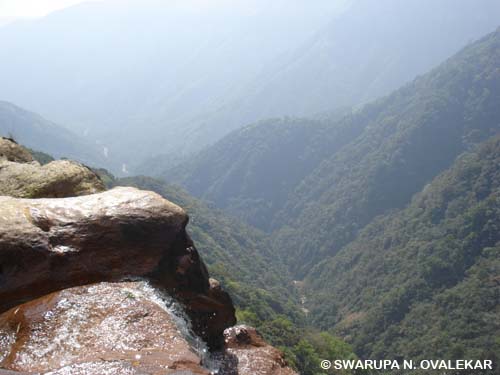


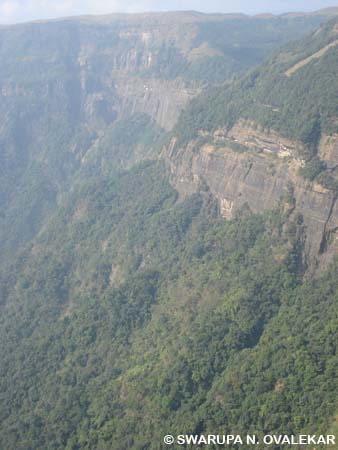



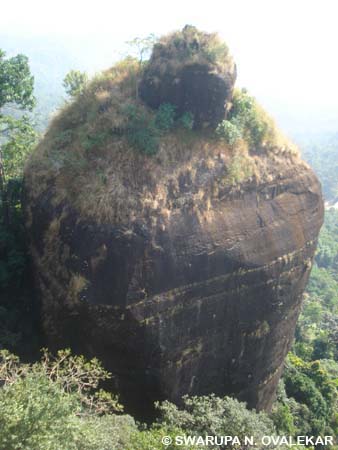







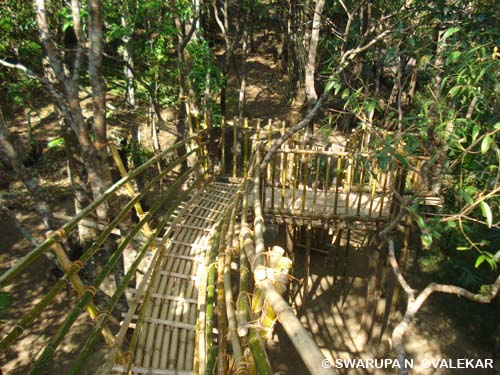





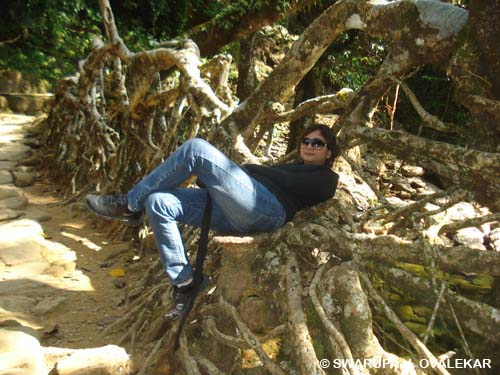
love this place nice an so biautyful
LikeLike
Hi, thanks for visiting my blog and for your kind comment! Keep visiting 🙂
LikeLike
Pingback: Rubber Plant | Find Me A Cure
You missed bio-engineering wonder Double decker root bridge near Cherapunjee.
LikeLiked by 1 person
Hi, Bijit. Thank you for visiting my blog and for your kind comment. Best
LikeLike